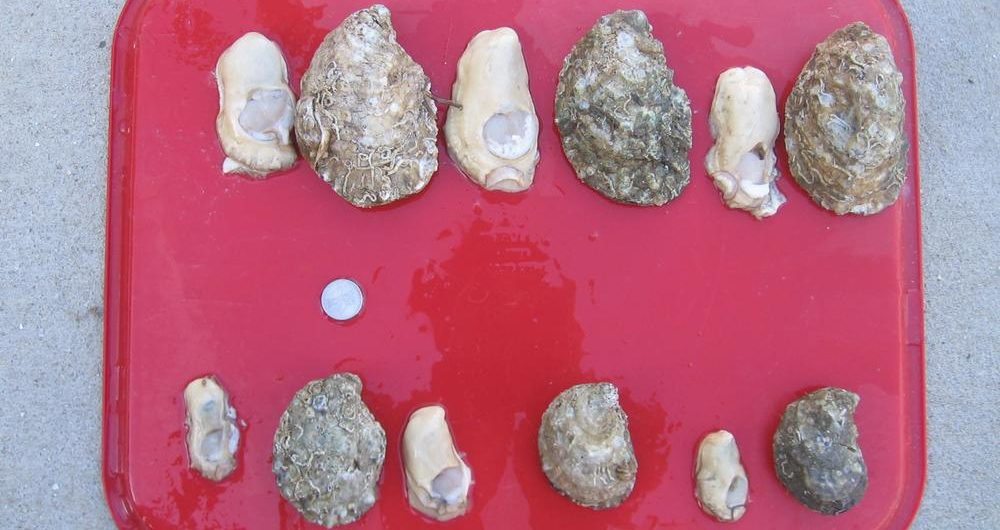Polyploid organisms have more than 2 sets of chromosomes. This occurs in select animals (such as goldfish, salmon and salamanders) but is found most frequently in plants, both wild and cultivated. Wheat, for instance, has strains with sets of 2, 4 and 6 chromosomes. Other common examples include seedless bananas, grapes and watermelons, which are produced on triploid plants with 3 sets of chromosomes.
So, triploid oysters have an extra set of chromosomes compared to the usual diploid oysters which have 2 sets. These oysters are generally sterile and grow faster than diploids. Unlike the meat of ordinary Pacific oysters, which usually becomes runny or chalky during the reproductive season in the summer, the meat of so-called “sexless” oysters remains flavorful and plump throughout the year. Triploids are also more resistant to disease. Today, about a third of all canned and jarred oysters are triploids.
Commercial production of triploid oysters on the West Coast of North America began in 1985 and has greatly increased since then. In the beginning, triploidy was induced from shock exposure to chemicals (such as cytochalasin B), heat or temperature pressure. As a result, the eggs contributed two sets of chromosomes instead of one and therefore created a triploid zygote when combined with the haploid sperm from a diploid male. However, triploid shellfish created by this method typically resulted in only about 80% of the viable eggs successfully becoming triploid. Furthermore, the harsh treatment resulted in mortality rates in the hatchery of 50-70% in the first 4 days. So, scientists continued looking for a more natural alternative for creating triploids.
In 1993, scientists at Rutgers University invented a new type of polyploid oyster—a tetraploid—which contains four complete sets of chromosomes. Importantly, unlike triploid shellfish, tetraploids are fully fertile, thus allowing them to be a parent for creating genetic triploids. The tetraploid males have now been used to fertilize eggs from diploids to produce batches of 100% triploids. No chemicals are required, and the mortality rates are much lower. This process was patented by privately held 4Cs Breeding Technologies, which produces tetraploid broodstock. Until the patent expired in January 2015, hatcheries which produced triploid oyster seed had to pay royalties to 4Cs if they used tetraploid broodstock.
Note that this triploid process is NOT genetic modification of the oysters. That would involve taking genes from the DNA of one species, and inserting it into another one. However, there is no cross-species exchange of DNA in a triploid oyster.
Today, many farmed oysters are triploid oysters, which helps ensure a stable, year-round supply of oysters for our tables. So, the next time you enjoy an oyster, you can think of it as a resounding scientific and commercial success story.
Additional Resources:
Chesapeake Quarterly: Trials & Errors & Triploids: Odyssey of an Oyster Inventor
Washington Post: It’s August. Have an Oyster.
The Atlantic: Tasty Mutants: The Invention of the Modern Oyster
Munchies: Meet the Man Who Invented Sexless Oysters
